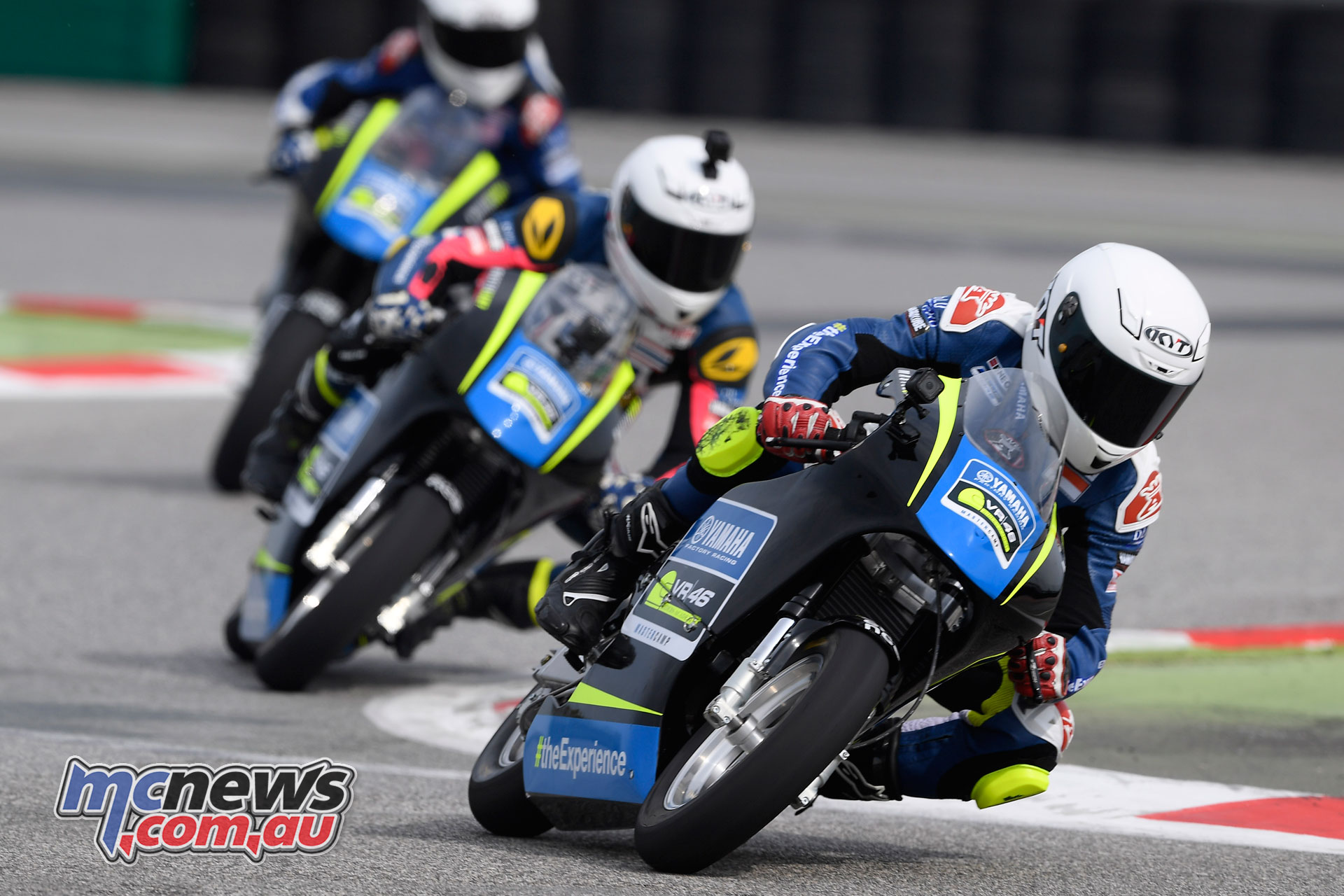Ducati 959 Panigale
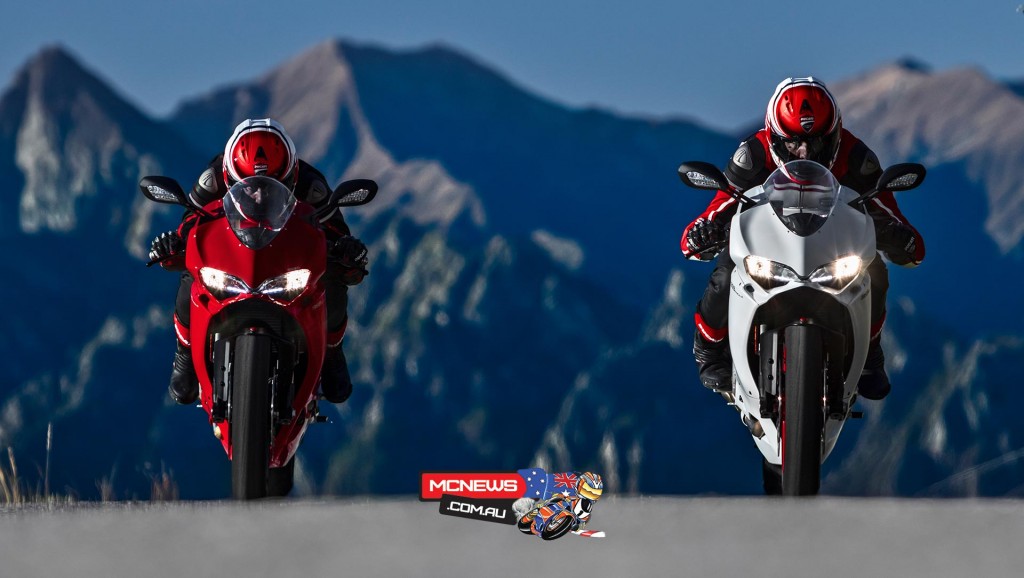
In 2016, Ducati’s 899 Panigale is to be replaced by the new Ducati 959 Panigale, making for an even more versatile “Supermid” model. The Ducati 959 Panigale shares the same innovative stylistic features that characterise its ‘bigger brother’, the 1299 Panigale – but with an engine designed for a more enjoyable everyday riding experience and more thrills on the race track.
The new 955 cm3 twin-cylinder power unit, the first Superquadro to have obtained Euro 4 type-approval, comes with a new stroke length and other innovations that have given rise to an even more impressive torque curve and increased maximum power, now 157 hp at 10.500 rpm. The increased torque and maximum power values do not imply shorter service intervals, therefore, valve clearance inspections are still only required every 24,000 kilometres (15,000 miles).
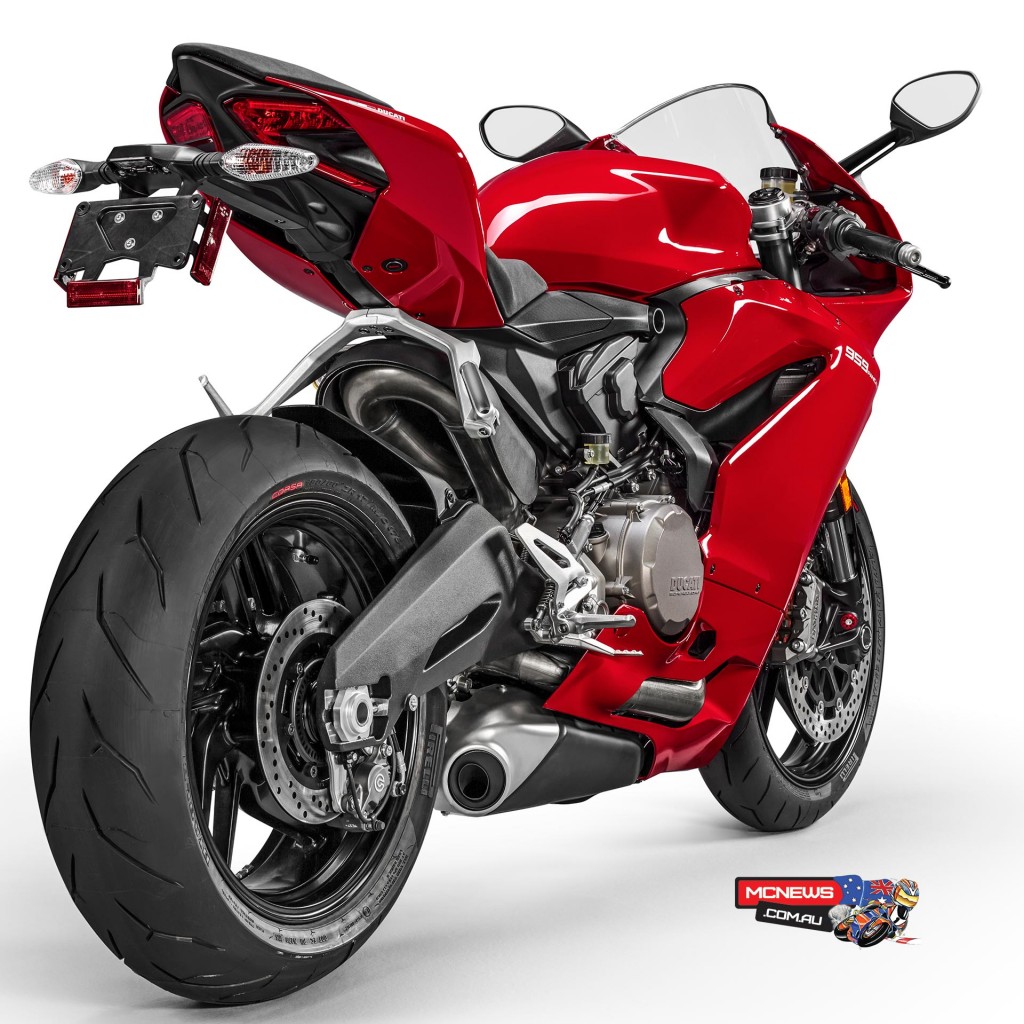
The smooth engine continues to be a fully stressed member of the innovative monocoque frame, achieving both an outstanding power-to-weight ratio and ride-enhancing response and agility with a dry weight of only 176 kg* – while still ensuring full compliance with the structural limitations required by Euro 4* standards.
The unmistakable 1299 Panigale-derived silhouette of this bike, even with a redesigned nose fairing, headlight and tailpiece, underlines the family DNA: the Ducati Quick Shift (DQS), Riding Mode technology including Ride-by-Wire, triple-stage Bosch ABS, Ducati Traction Control (DTC) and Engine Brake Control (EBC) featured by the Panigale are in line with Ducati’s very own standards of technological excellence.
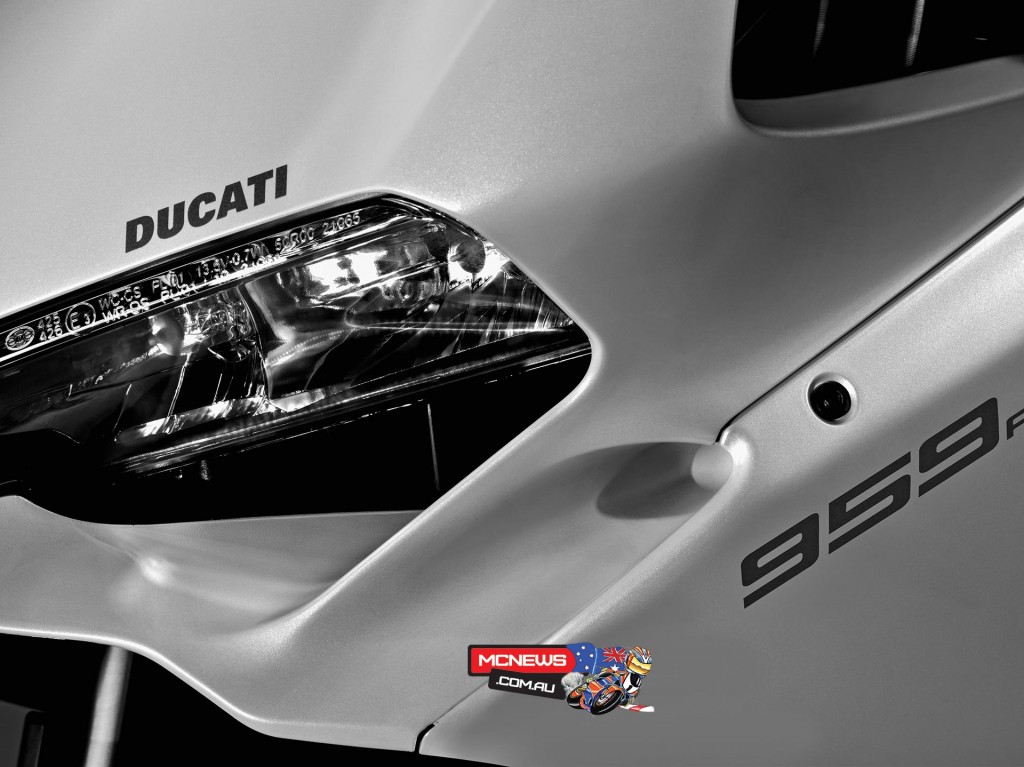
Every last detail of the 959 Panigale pays tribute to Ducati’s legendary racing heritage. The wider nose fairing and screen improve aerodynamic performance and add to the aggressive look of the new front end, also enhanced by larger-section front air intakes. The split tailpiece design is the final touch to a real work of art: the 959 Panigale fairing, now including redesigned lateral air intakes and new rear view mirrors. The new bike is also equipped with aluminium billet-machined footrests for enhanced boot grip while riding.
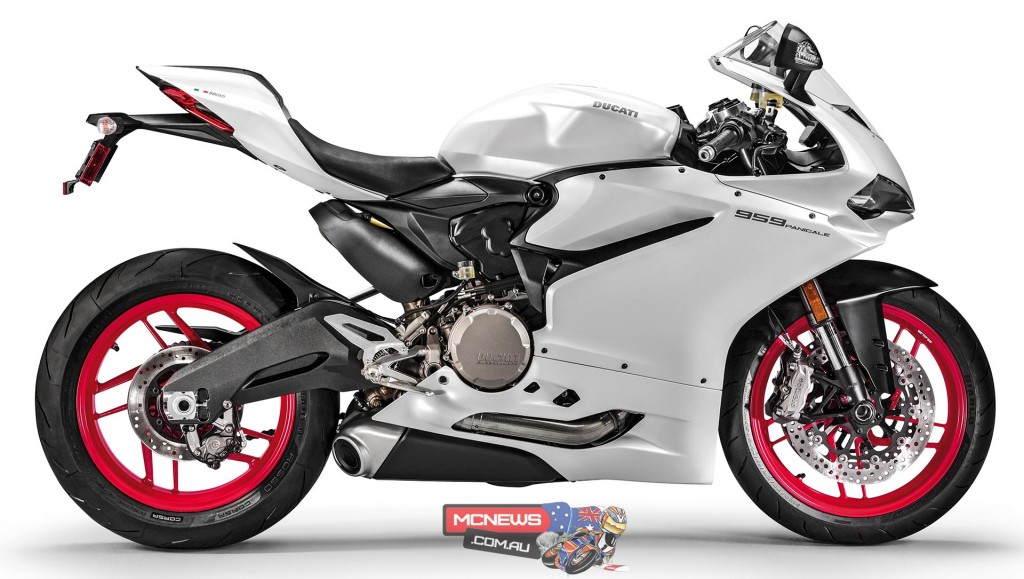
The 959 Panigale is available in traditional Ducati red with black wheels or a stunning Arctic White Silk with contrasting red wheels.
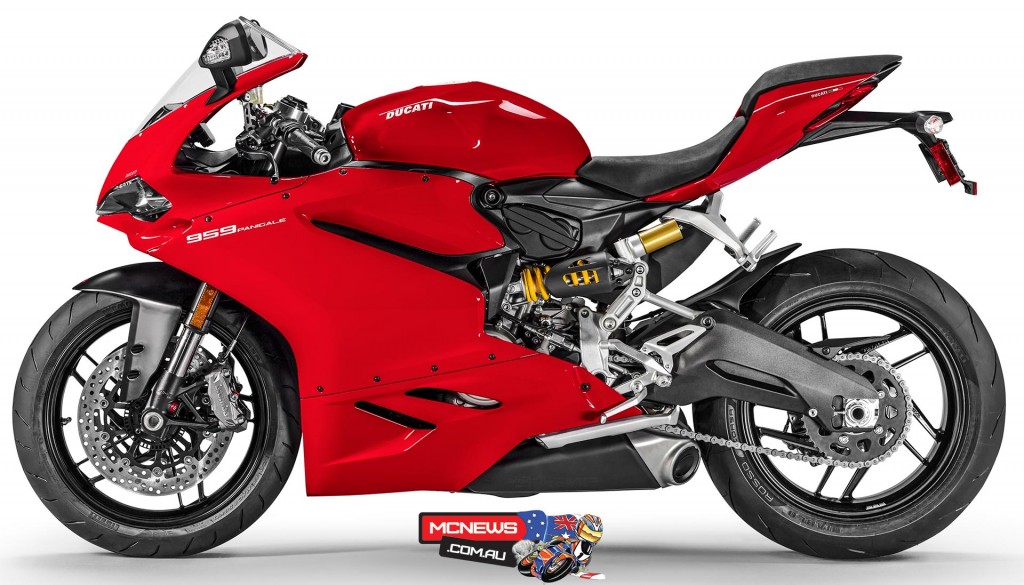
Ducati 959 Panigale
- New 955 cm. engine
- Servoassisted ‘slipper’ function clutch
- Riding Modes (Race, Sport, Wet)
- Ducati Safety Pack (ABS, DTC)
- EBC, DQS
- Sachs steering damper
Ducati Australia are as yet unable to advise an ETA on the Ducati 959 Panigale or what the new model will sell for.
Ducati 959 Panigale Engine
The 90° L-twin Superquadro engine of the 959 Panigale is a further step forward from the previous version installed on the 899 Panigale. The 959 Panigale engine is also the first Superquadro to be in line with Euro 4* pollution control standards.
With its 157 hp at 10,500 rpm, and a torque of 107.4 Nm at 9,000 rpm, this twin-cylinder power unit ensures user-friendlier, smooth delivery. The engine size increase was possible thanks to the longer piston stroke – increased from 57.2 to 60.8 mm, while the bore is still unchanged at 100 mm. To achieve the new stroke length, the crankshaft was redesigned to include a brand-new crank journal lubrication system – an absolute first for a Superquadro engine.
The engineers went back to the drawing board for completely new con-rods, too – to suit the increased stroke, while the compression ratio has not changed from 12.5:1.
The rethink also involved the piston crown and DLC (Diamond Like Carbon) coating on the piston pins. The two heads and aluminium top covers now feature a ribbed design to reduce mechanical noise – a critically important pre-requisite for Euro 4* compliance. For the same reason, a different cam timing chain was used.
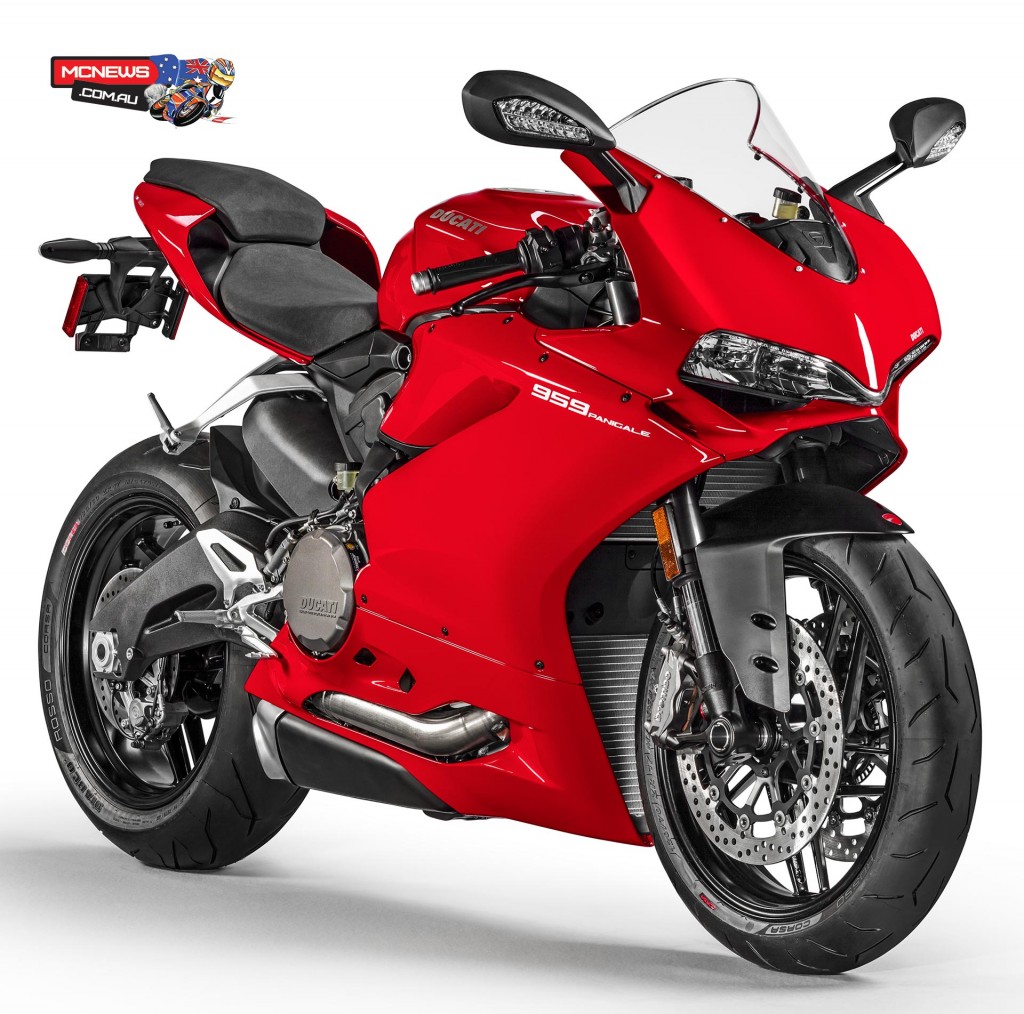
The crankcases, shared by the 959’s ‘bigger brother, the 1299 Panigale, are vacuum die-cast using Vacural® technology to ensure optimal weight saving, and feature consistent wall thickness and increased strength. The crankcase cover and clutch casing are both aluminium like the oil sump, and now sport a split design with differently ribbed patterns.
The combustion chamber design allows for large valve diameters: 41.8 mm for the intake valve and 34 mm for the exhaust one. The valves are actuated by racing-derived rocker arms, ‘super-finished’ and with a special DLC facing for reduced friction and increased fatigue strength.
The 959 Panigale volumetric efficiency is ensured by the oval throttle body dimensions – having an equivalent diameter of 62 mm. The throttle bodies are now fitted with two injectors per cylinder – one above and one below the butterfly, independently controlled by a full Ride-by-Wire system. The new engine uses Ducati’s secondary air system, maintaining performance-optimised fuel mapping and effectively containing HC and CO levels while preventing unburned fuel emissions.
The transmission features a six-speed gearbox and a 1299 Panigale-derived oil bath clutch. An absolute first for a mid-size Superquadro engine, the clutch assembly features a progressive self-servo mechanism that compresses the friction plates when under drive from the engine without any extra effort required from the rider to release the clutch. While enhancing frictional efficiency, this also results in a rider-friendly, light clutch lever “feel” at the handlebar. In sport riding conditions, the same mechanism reduces pressure on the friction plates, enabling a true racing “slipper” action, reducing the destabilising effect of the rear-end and providing a much smoother feeling when closing the throttle or during aggressive down-shifting, with the extra benefit of a super-responsive lever. The 959 Panigale has a redesigned exhaust system with twin silencers placed on the right-hand side of the bike*.
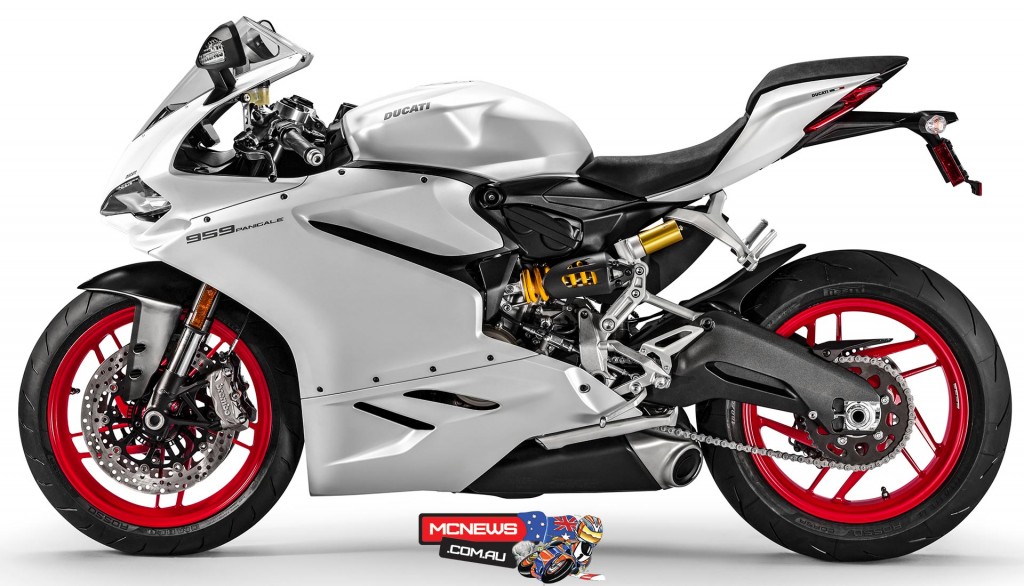
Trademark Desmo system
Could the 959 Panigale engine not feature Ducati’s very own Desmodromic timing system? Bearing in mind the high Superquadro engine speeds, it would be impossible for the intake and exhaust valve rocker-arms to follow the steep closure profile of the high-performance cam profiles using normal valve closure springs. With the Desmo system, the valves are closed mechanically with the same level of accuracy as in the opening stage, enabling the steep cam profiles and radical cam timings required to achieve this model’s signature high performance standards. This system is used on every single Ducati motorcycle and is constantly proven on Ducati Corse’s World Superbikes and Desmosedici MotoGP bikes.





